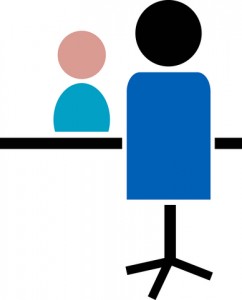Cracking the “Non-Verbal” Code of an Interview
Giving interviews is a tricky business. You are judged not only on the basis of your verbal skills, but on your non-verbal acumen as well. It is not just about the explicit meaning of words but about the implicit transfer of messages. Non-verbal behaviour involves interpersonal communication of a different level. It is but an un-intentional method of communication, playing at a very subconscious level.
Cracking the code of effective non-verbal communication is bewildering for the best of us. Its components can have you reeling in every dimension. From facial expressions and tone of voice, to body language and physical proximity, non-verbal signals give additional information and meaning over and above verbal communication.
1. Kinesics
Kinesics refers to body language or body movements. This includes posture, gestures, hand movements, or body movements on the whole. The key attributes of this non-verbal component are:
- Reinforces what a person is saying.
- Gives additional information about the attitudes and emotions of a candidate.
- Can conflict with what a person is saying. Hence, a skilled hiring manager can detect this discrepancy and catch you where you are weak.
- Expressions of happiness, sadness, anxiety, etc. are globally recognized and can be sensed easily.
Examples of kinesics are socially and culturally diverse. Understanding the detailed nuances of body language is very important for effective job acquisition. For example, an Indian looking for an overseas job with a multi-national company must know how to acknowledge an employer of different nationality. Folding hands in Namaste may not be understood by the said individual, which could lead to an embarrassing start. Some other common examples are:
- Glancing at your watch during the interview.
- Tapping your feet – shows impatience and anxiety.
- Fidgeting in your chair.
- Coughing too much or clearing your throat every 2 seconds.
- Moving your hands too much when enunciating.
2. Oculesics
Bharatanatyam is all about eye movement, and so is an interview. The intensity of your glance, pupil dilation, frequency of glances, and blink rate can publicise hidden intent. A smile on your face can never mask the look of utter terror in your eyes when sitting in front of a panel. You can keep eye movements in check by focussing at a point close to the interviewers face; without staring at him directly. Oculesics matter in an interview because:
- Eye contact is essential for giving and receiving feedback.
- It lets the other person know that it’s their time to talk without having to say the words.
- It is the bridge between listening and speaking.
- It can be employed to convey silence, ignorance, and anger. For example: You look away when you want to avoid answering a question, you look down when you are unsure of what to say, and you look up when you are trying to remember a point.
3. Paralinguistics
Para-language pertains to the tone and pitch of your voice. Girls are generally shrill and get squeakier in an interview. Boys on the other hand have a deeper baritone which all but disappears when it comes to answering questions. Being aware of how you talk, the speed and volume of your message delivery, and the pauses and hesitations between words is highly important. During an interview, if you put emphasis on certain words, they are sure to be picked up by the hiring manager.
4. Proxemics
Different cultures display different levels of closeness that is appropriate for building corporate relationships. Violating this “appropriate” distance can leave individuals feeling defensive or uncomfortable. “Space” issues can open portals to misinterpretation. The main categories of proxemics include:
- Intimate distance – upto 45cm.
- Personal distance – 45cm to 1.2m.
- Social distance – 1.2m to 3.6m.
- Public distance – 3.7m to 4.5m.
Understanding distances will allow you to approach others in an appropriate and non-menacing manner. Interviewers will understand how you feel about the situation and, if required, will change their behaviour accordingly.
5. Chronemics
Understanding the language of time is exceptionally important in an interview. It not only makes for good interview ethics but bodes well for your personality in case you get hired. People perceive time differently across cultures. It pertains to punctuality, interactions, and willingness to wait. Your time-usage acumen can define whether you are suitable for a particular job profile or not. Chronemics can define status as well.
For example: a boss can take a break from work any time of the day, but you will have to take permission for a 5 minute stroll in the park. Time across cultures in divided into:
- Monochronic time: Everything is scheduled, organized, and pre-planned. Events are conducted at one particular point in time. Germany, Switzerland, and Canada employ a monochronic culture.
- Polychronic time: Multiple events are conducted at once, and scheduling time is more flexible. Africa, Latin America, and Asia exhibit a polychronic culture.
Conclusion
Non-verbal communication forms an integral part of any candidate’s profile. Most job seekers are unaware of their non-verbal behaviour; hence, making mistakes is quite a common affair. With practise and repeated interviews, you will not only understand how to conduct yourself, but will garner sufficient experience to read the interviewers expressions as well. An in-depth knowledge of the aforementioned components can lead to greater shared understanding, which is the true purpose of interaction and communication.
Author Bio:
Tina Jindal is a professional content writer who works on a variety of topics like employment, real estate, and education. She has been involved with renowned publications and has tried her hand at editing works on Cookery, Gardening, Pregnancy, and Healthcare. She loves to travel and is crazy about dogs. You can contact her @Gmail | LinkedIn

